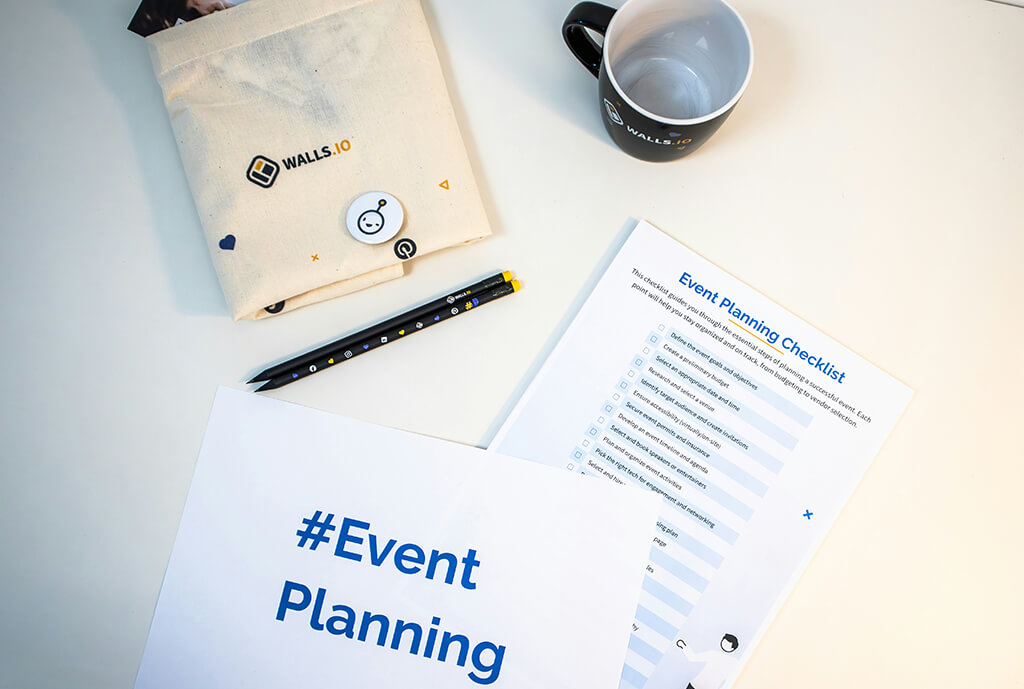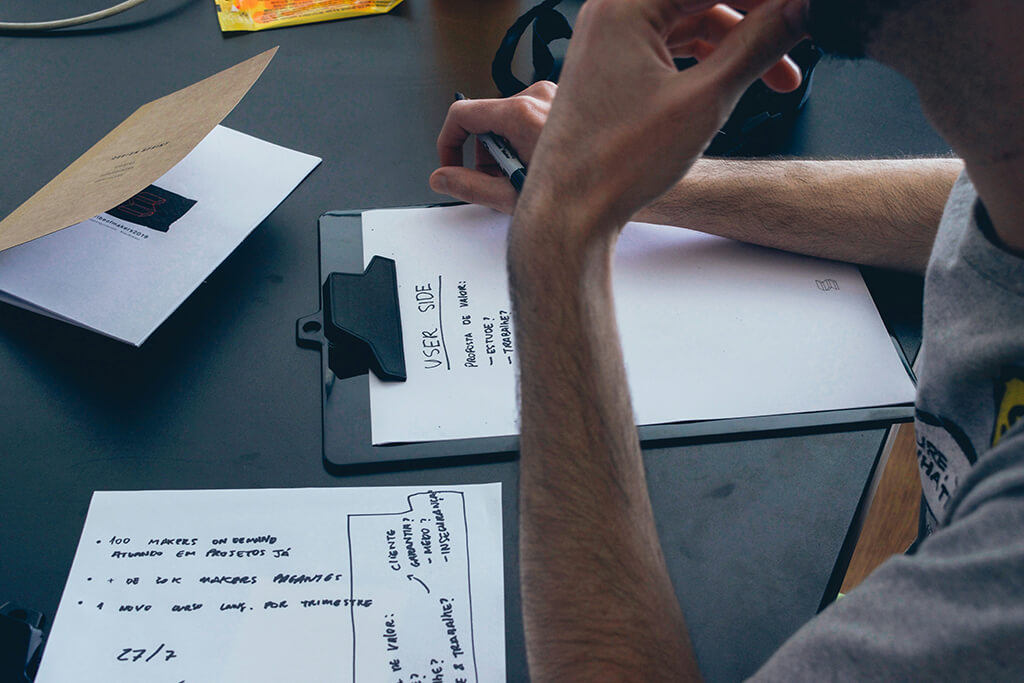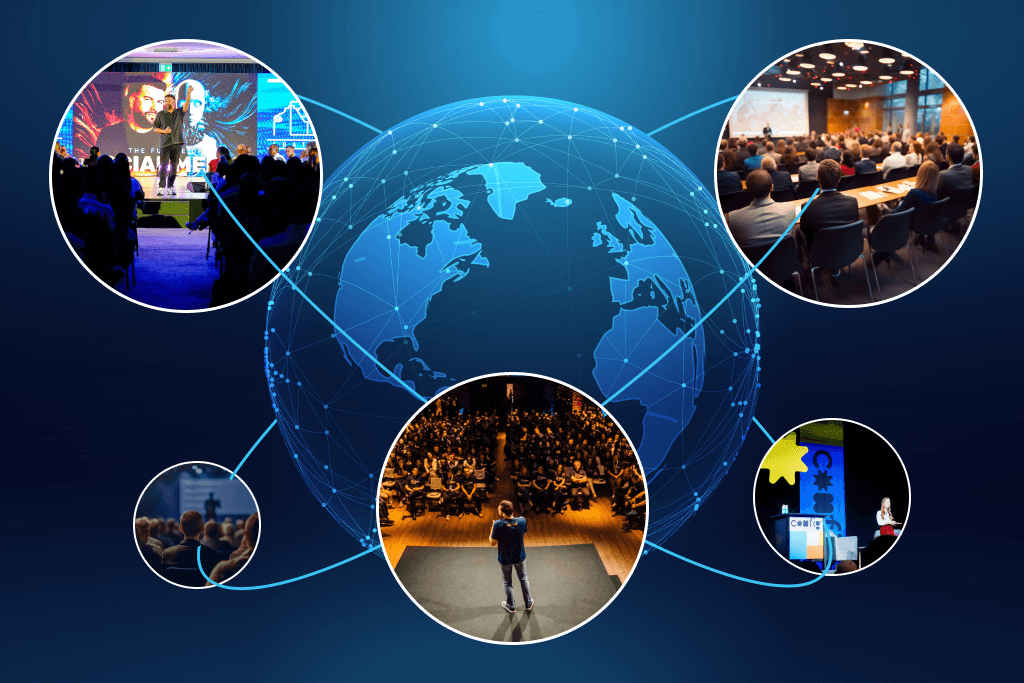Are you planning a nonprofit event but already feeling overwhelmed? Between sponsors, volunteers, ticketing, and follow-ups, it’s a lot to juggle. That’s where nonprofit event management comes in.
With the right tools and event strategy, you can turn the chaos into a smooth, purpose-driven experience that actually delivers results. In this guide, we’ll walk you through what nonprofit event management really involves, the best tools to simplify it, and how to create events that inspire action, not stress.
Nonprofit Event Management Overview
Nonprofit event management is all about bringing people together for a purpose, whether it’s raising funds, spreading awareness, or building a stronger community around a shared cause.
From volunteer drives to post-event follow-ups, each step requires careful planning, budgeting, and coordination to pull off successfully. With the help of modern tools and smart strategies, nonprofits can simplify logistics, grow donations, and create meaningful moments that truly make a difference.
Steps for Planning a Nonprofit Event
Planning a nonprofit event means turning vision into action. You set goals and budgets, manage promotions, oversee operations, and handle follow-ups. Each step you perform should build toward your fundraising, engagement, and mission outcomes.
.jpg)
1 —Define Clear Goals & Event Type
First, define the event type you are going to host. It can be a gala, run/walk, virtual fundraiser, hybrid, awareness gathering, or anything that will directly support your objective. Write the purpose, mission, vision and plan along with objective, it will help understanding everything you are doing to do.
Once you are done, set SMART goals; which are as followed:
S - Specific
Here are a few questions that will help you specify a clear and unambiguous goal:
- What is the purpose of the event? What do we want to accomplish?
- Who will be involved in this event?
- Where should it happen?
- How soon or later can we achieve this goal?
- Why is this goal so important?
The answers should be detailed, for example: "Get more people to come.", it is vague. Instead mention specific goals like, “We want to increase the audience for our annual conference.”
M - Measurable
Measure and track your progress and set a limit in numbers or percentage when to reach the goal. For example, “We want to increase the audience by 15% from last year for this annual event.”
A - Achievable
If the goal is unrealistic then it can be achieved even with a great team. Your goal should be realistic and attainable. Impossible goals will always demotivate the team. Check for budget, the resource and how much time you need to complete it. For example, “We want to increase the audience by 15% from last year for this annual event. Let us invest in $500 in marketing for more engagement and registration."
R - Relevant
Look for the relevant resources that align with your event’s purpose. For example, if you are doing a Charity gala then you should look for community-focused business.
T - Time-bound
Of course, if you want progress there should always be a time-line to follow and a deadline. It helps in prioritizing each task. Sit down with your team, lay out all the resources you have and set a timeline. For example, “We want to increase the audience by 15% from last year for this annual event. Let us get final registration by this specific date.”
Additionally, set 2–3 core KPIs, like donor conversion rate, attendance target, or social reach, to measure real impact post-event.
Pro tip: Use past event data to guide realistic targets. Ask: “What worked before?” and “Where did we fall short?”
2 —Assemble Your Planning Team & Assign Roles
Form a diverse committee including staff, board, and volunteers. Once the team is complete, break out roles among them like logistics lead, marketing lead, sponsorship lead, volunteer manager, and guest experience. With regular check-ins and clear accountability, you can avoid overlaps.
Use digital collaboration tools to assign deliverables and track deadlines of your team in real time. Schedule weekly sync meetings to address any issues early and maintain momentum.
Pro tip: Use a RACI chart (Responsible, Accountable, Consulted, Informed) to clarify who does what.
3 —Develop Your Budget & Financial Plan
.jpg)
Carefully list all direct and indirect expenses you’ll encounter, including venue, catering, technology, permits, décor, entertainment, marketing, and security. Next, estimate revenue sources like tickets, sponsorships, auctions, and donations to see how you can cover the expenses. Always include a 10–20% buffer in your budget to account for unexpected expenses.
You can set up a shared financial tracker in Google Sheets or Excel with “Planned vs. Actual” columns to keep spending transparent. Review it bi-weekly with your finance lead.
Pro tip: Rank your cost items by ROI potential. For example, spending more on sound and staging may increase fundraising performance more than premium decor.
4 — Choose Date, Venue & Format
Select a date that avoids conflicting events, holidays, or major local happenings. After selecting the date, decide whether your event will be in-person, hybrid, or virtual. For in-person events, go for a venue that has enough capacity and accessibility, amenities, and contingency plans (rain backup). Look for the venue’s accessibility like wheelchair ramps, parking, restroom access and inclusivity like dietary options and sensory-friendly spaces.
For virtual or hybrid events, ensure you have high-speed internet, dedicated AV support, and tech rehearsal schedules to avoid any issues.
Pro tip: For hybrid events, invest in reliable AV streaming early. Don’t bolt virtual onto a physical event at the last minute.
5 —Secure Sponsors & Partnerships
Develop tiered sponsorship packages (e.g., Gold, Silver, Bronze) with clear benefits for each level. Consider different types of sponsors, including community, in-kind, and individual, since each contributes uniquely to your event’s success. Proactively reach out to local businesses and align their sponsorship with the audience exposure most relevant to them.
You can use storytelling to showcase sponsor impact and highlight how their contribution will directly supports your cause.
Pro tip: Personalize pitches for each sponsor, showing how their brand aligns with your mission and how they benefit.
6 —Plan Logistics & Program Design

Plan your event schedule with clear timelines, starting from registration and welcome remarks to the main program, breaks, awards, auction, and closing. Ensure each segment flows naturally with well-timed transitions and backup plans in place.
Coordinate vendors, secure permits, and organize logistics such as parking, security, signage, and volunteer shifts to keep everything running seamlessly. To avoid unseen and last minute issues, include a “tech contingency” checklist for AV, Wi-Fi, and payment systems, and have an on-site troubleshooting lead assigned. You can use an Non profit event management software or app for attendee attendance tracking too for ease.
Insight: Do a “walk-through” or “dry run” with the core team to catch timing issues. Leave slack time between segments.
7 —Promote & Drive Registrations
Market your event using multiple social media platforms, emails, local press, flyers, and SMS to drive maximum participation. To boost registrations, you can leverage early-bird pricing, countdowns, and partner cross-promotion.
You may also create a content calendar to plan posts, influencer collaborations, and sponsor shoutouts, and make sure everything goes according to it to create a buzz. Posting impact stories, ads and behind the scenes, or leveraging beneficiary testimonials also helps drive registrations.
Embedding donation options on registration pages and social media platforms will also make it easier to collect contributions.
Tip: Create urgency with limited seats, deadlines, and use testimonial quotes or impact stories to drive engagement.
8 — Execute the Event Day
On event day, set up reliable communication tools, such as walkie-talkies or group messaging apps, to ensure real-time coordination. Before the event, monitor setup, registration flow, speaker transitions, and technical systems so that nothing goes wrong.
Backup plans, such as alternative venues or substitute entertainment, are essential in case of issues like bad weather or speaker delays. Additionally, you can hold a pre-event briefing with all team leads and volunteers to review responsibilities, emergency contacts, and escalation plans.
Pro tip: Station “floater” volunteers for unplanned needs. Leadership should circulate among attendees to build connections.
9 — Thank, Follow Up & Evaluate
The event doesn’t end here. Within 24–48 hours, send personalized thank-you messages featuring photos and video highlights from the event. For yourself, distribute post-event surveys to evaluate attendance vs. registration, revenue vs. cost, donor conversion rates, and lessons learned. The results and metrics will help you plan your upcoming events in a better way.
Share event results and metrics, distribute post-event surveys, and evaluate key indicators such as attendance vs. registration, revenue vs. cost, donor conversion rates, and lessons learned.
Common Mistakes And How To Avoid Them
Events most often fail due to predictable issues such as delayed planning, inadequate budgets, technical glitches, and insufficient follow-up. Below are the top pitfalls with direct, actionable fixes so your next nonprofit event performs better and costs less stress.
1 —Starting Planning Too Late

Delaying the planning process limits sponsor opportunities and may force compromises on venue and vendor choices. So, for a successful and seamless execution, plan a reverse timeline by mentioning milestones at −12, −6, −3, and −1 months for large events, starting with the venue and key vendors to protect the dates.
Pro tip: Create a one-page milestone calendar and share it with the committee within 48 hours.
2 — Underestimating Total Costs (Especially Staff Time)
Many organizations overlook hidden costs and staff hours in their budgets. As a result, their projected profits appear higher on paper than they are in reality.
To cater to it, you should build a full-cost budget that includes paid staff hours, volunteer management time, and a 10–20% contingency. Compare the projected and real ROI after the event and see the costs you forgot to include in your budget this time. This will help you generate a more accurate budget for your next event.
3 — Unclear Goals and Success Metrics
Having vague aims like “raise awareness” makes it difficult to measure progress or make informed decisions. Instead, define 2–3 SMART KPIs, for example, revenue growth, new donor sign-ups, or donor retention rate, and ensure every activity ties back to those objectives.
Create a centralized dashboard to track these metrics so your marketing, pricing, and sponsorship strategies remain focused and data-driven.
4 — Poor Ticketing/Donation Page UX
Organizations often assume that longer donation or ticket pages drive more registrations or contributions, but the opposite is true. Long and confusing pages lose gifts.
Optimize for mobile, shorten forms, offer one-click payment options, and A/B test the call to action. Include suggested gift amounts and write clear impact statements on the page to convey the proper message to your audience. Before launching, test the full checkout flow.
5 — Weak Promotion or Wrong Audience Targeting
.jpg)
Not knowing your audience or relying on one channel for promotion reduces turnout even for high-potential events.
For the best results, build a multichannel plan with segmented email, social ads for lookalike audiences, board member outreach, and local press. Doing so will help you reach a broader audience and increase both donations and registrations. Schedule a promotional cadence and measure channel conversion to optimize ad spending.
Side note: Early-bird pricing + limited VIP tables create urgency and improve early cash flow.
6 — Not Packaging Sponsorships or Failing to Activate Sponsors
Offering a one-size-fits-all sponsorship package undercuts potential income. Create tiered, measurable packages that specify visibility, activations, and lead data, and share a sponsor activation plan so they understand how you’ll deliver value. To track sponsor deliverables, create a shared checklist.
Pro tip: Include a short post-event sponsor report with impressions, photos, and lead lists.
7 — Poor Volunteer Management & Unclear Roles
Bringing in untrained volunteers can slow things down, creating bottlenecks at check-in, merchandise, and auction areas.
To improve this situation, use a RACI or volunteer-run sheet, assign team leads, conduct a 60–90-minute training, and provide clear escalation paths on event day. You can also provide them with a messaging app or a radio for real-time updates.
Pro tip: Give volunteers one simple “mission” card with 3 bullet tasks and who to call if something breaks.
8 — Ignoring Tech and Contingency Planning
Tech failures such as AV issues, Wi-Fi outages, payment terminal errors, or livestream problems and even weather disruptions can derail the best-managed events.
To avoid technical issues, do a full tech dry run before the event, keep spare hardware, and secure professional AV for hybrid setups. In addition, ensure you have a reliable contingency plan that includes a backup venue, rain plan, and rescheduling policy in case of extreme weather.
Pro tip: Label cables and pack a “tech emergency kit” that includes chargers, Ethernet cables, power strips, and a spare microphone.
9 — Failing to thank and steward attendees quickly
Delayed or generic thank-yous can hurt donor retention. Always send personalized acknowledgments within 24–48 hours, including the donation receipt, event highlights, and a clear statement of the donor’s impact.
To take it a step further, segment your communications for major donors, first-time contributors, and volunteers, since each deserves a tailored follow-up that reflects their unique role and contribution.
Pro tip: Automate initial thanks, but follow up personally for top donors within a week.
10 — Not Measuring ROI or Capturing Lessons Learned
Skipping a post-event analysis means missing out on valuable insights for the future. Take the time to review what worked and what didn’t. Compare RSVPs to actual attendance, break down revenue by source, and analyze donor conversions, sponsor ROI, and post-event survey feedback. Summarize your findings in a short, easy-to-digest report that highlights key wins and outlines three specific areas for improvement next time.
Side note: Store all event data in your CRM so future invites and asks are personalized.
Success Stories and Case Studies

1. Amref Health Africa
Amref organized its health conference, but it lacked one thing, and it was engagement. They suffered from fragmented communication and low networking. With Eventify’s app, which had an interactive guide, matchmaking, push alerts, and exhibitor visibility, the event was elevated. Over 70% of attendees used matchmaking, and sponsors gained exposure. Besides, the real-time updates boosted satisfaction.
2. Public Health Collaboration
Public Health Collaboration struggled with low interaction and manual event workflows. They turned to Eventify, using live Q&A, polls, gamification, ticketing, and networking modules. Ticketing smoothed out, and sponsors saw stronger connections, due to which engagement surged, and more attendees stayed until the end.
3. “A Night In…” Virtual Fundraiser
During COVID-19, the A Night In virtual fundraiser hosted a fully online gala under a tight two-week deadline. They used a nonprofit virtual event platform to enable livestreaming, embedded content, raffles, challenges, and real-time tracking. They achieved 400% of the fundraising goal, drew 125+ participants, and sold 1,213 raffle tickets.
3 Best Tools For Non-Profit Event Management
1. Eventify
.png)
Eventify is a full-featured event management platform designed to streamline nonprofit events from planning to execution. It offers everything from registration and ticketing, attendee engagement, scheduling, sponsor/exhibitor tools, and analytics to branded event apps.
Key Features
- Attendee Engagement: Arrange live Q&A sessions, polls, tag-based matchmaking, social feeds, and a chat and meeting tool for your audience to boost participation and relationship-building.
- Sponsor & Exhibitor Visibility: Showcase sponsors with interactive floor maps, branded listings, and lead capture tools to attract and retain sponsors easily.
- Real-Time Analytics & Dashboards: Monitor registrations, attendance, and engagement live, making it easier to adjust strategies mid-event and measure post-event ROI.
- Registration & Ticketing Tools: Eventify simplifies online ticketing, QR-based check-ins, and guest management, reducing manual work and ensuring a smooth entry experience.
- Customization & Branding: You can create event apps that reflect your nonprofit’s identity with branded themes, interactive maps, and exhibitor listings.
Best Fit
Ideal for nonprofits running large-scale fundraising events that require strong sponsor visibility, attendee interaction, and data-driven management.
2. Donorbox
.png)
Donorbox is a donation-driven platform trusted by thousands of nonprofits worldwide. With integrated donation forms, event ticketing, and donation management all in one place, it is built to make giving simple. Nonprofit organizations can create branded fundraising events with minimal setup and maximum reach.
Key Features:
- Customizable Ticketing Forms: It lets you embed branded event registration and donation forms directly on your website without any coding.
- Flexible Payment Options: You can accept payments through QR codes, mobile check-ins, or live kiosks, which makes it easier for donors to contribute anytime.
- Multi-Currency Support: Donorbox accepts international payments, enabling global participation in your fundraising efforts.
- Website Integrations: Works seamlessly with WordPress, Squarespace, and Wix, helping nonprofits launch event pages fast without technical hassle.
- Built-In Donation Tracking: It automatically logs donor data for follow-up and future campaigns, supporting long-term relationship building.
Best Fit:
Perfect for nonprofits focused on donation-heavy events and fundraisers that need simple, reliable, and secure payment processing with built-in donor management.
Whova
.png)
Whova is a leading event management solution tailored for conferences, summits, and hybrid nonprofit events. It empowers organizers to connect attendees, manage logistics, and deliver interactive experiences through a unified mobile and web platform.
Key Features:
- All-in-One Mobile App: Whova has in-built event schedules, documents, attendee messaging, and Q&A, making participation easy and engaging.
- Automated Alerts & Updates: It lets you send instant notifications via email, text, or push alerts to keep participants informed and on schedule.
- Networking & Community Tools: You can enable attendee matchmaking, discussion boards, and in-app chat, which is ideal for fostering long-term community engagement.
- Analytics & Reporting: Monitor attendance, engagement, and feedback to help organizations refine future event strategies.
Best Fit:
Best for nonprofits hosting hybrid or multi-day conferences that prioritize communication, engagement, and data insights across large audiences.
Use Eventify To Streamline Your Non-Profit Event Management
Are you ready to make your next charity gala or community fundraiser effortless?
Eventify brings registration, ticketing, volunteer coordination, and attendee engagement under one roof so you can focus on your mission, not the logistics.






.png)




